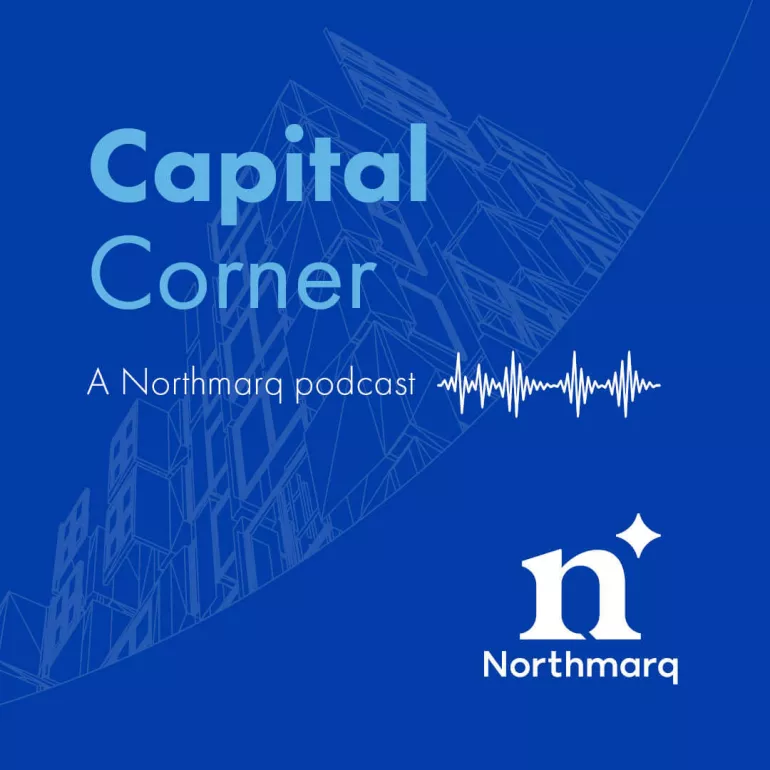Capital Corner: Equity ramps up CRE investor buying power
Equity is playing an increasingly pivotal role in the multifamily capital stack as institutional groups partner on acquisitions and development, with an abundance of equity capital available.
New equity sources include new life company programs and foreign capital increasing their allocations in the U.S. All equity sources are intensely focused on value-add, core-plus, build-to-rent (BTR), and opportunity zones niches with multifamily properties.
In addition, some equity players are shifting strategies from struggling asset classes like office and hotels and allocating capital to the resilient apartment market.
“Clearly, the equity side of the multifamily business remains heavily favored by a wide range of investors,” says Jeff Erxleben, Northmarq’s executive vice president/executive managing director - debt & equity.
Life companies have a ferocious appetite for multifamily mortgages as part of their investment allocation. They are widening their offerings and looking for new, creative ways to generate yield. Additionally, international investors are chasing yield and eager to enter the U.S. apartment market, creating new sources of capital.
“There's pent-up demand by foreign capital to come here,” says Joel Heikenfeld, senior vice president, Debt & Equity in Dallas. “COVID-19 has hampered international capital because people couldn’t travel. Europe and Asia, for the most part, have been shut down, and they prefer to do face-to-face deals. We expect activity to pick up in 2022.”
Equity trends:
-- Larger investment size. Most players are attracted to equity deals of $10 million-plus. “At a minimum, we’re seeing roughly $10 million for equity investments all the way up to north of $200 million for portfolios, so larger investments are definitely a trend,” Erxleben notes.
-- Strong activity across all product lines. Products include conventional financing options as well as value-add. Multifamily value-add deals are becoming increasingly larger, resulting in a need to find new and bigger sources of equity.
-- Specialty products expand. Equity capital is pouring into specialty product lines including manufactured housing and single-family Build-to-Rent properties. “For build-to-rent, there are some really creative equity structures,” Erxleben explains. “For example, some are providing the full capital stack on day one with a pre-buy takeout.”
Several large institutional investors have announced plans to move tens of billions of dollars into single-family rentals.
-- Demographic shift occurring. Investors have shifted capital away from coastal and gateway markets and into the Sun Belt states, seeking high-quality assets in high-growth secondary and tertiary markets like Phoenix and Dallas.
Is an equity partner the right fit?
“While there continues to be an influx of equity looking to enter the multifamily space, the challenge is how do borrowers get into that space and make sure they align their programs with the deals in the market?” says Pat Minea, executive vice president -- Debt & Equity at Northmarq.
“Our role is helping them navigate all the capital sources,” Minea continues. “We help them figure out the best path. We coach our borrowers and help them find deals and help the equity find deals. There's plenty of capital for equity; it's just making the deals fit with the right source.”
Jake Leibsohn, Vice President at Northmarq’s Seattle office, agrees: “Oftentimes, equity can be very helpful in growing a portfolio because it offers access to huge amounts of capital,” he says.
However, there can be some disadvantages to bringing in a large partner including extensive reporting requirements and shorter investment horizons. After ensuring that equity is a good fit for the sponsor, the next step is confirming the deal is a good fit for the equity.
“Typically, large groups look at whether the sponsor has experience, the size of the deal, and obviously, they’re seeking good, risk-adjusted returns,” Leibsohn explains. “If a deal doesn't hit those metrics, it's tough to find an equity partner.”
Equity transaction examples
In spring 2021, a sponsor approached Northmarq about its new core-plus strategy and was looking to raise equity. The opportunity was a 1999-built multifamily asset in North Dallas that was well-priced at under $200,000 a unit.
“It was a slam dunk. Anyone would do that deal today,” says Heikenfeld. However, challenges at the time included an unprecedented Texas freeze resulting in property damage, the impacts of COVID, and soaring multifamily pricing.
“At the time, many core-plus institutional groups were either putting their capital together or hadn't figured out their strategy in Texas,” Heikenfeld explains.
Still, Northmarq had very good response from equity groups. The group they brought in was pivoting from a commercial strategy and raised $700 million of capital to deploy into core-plus properties.
“This was their first venture, so it was a new relationship and new strategy for the equity group, and it helped fulfill the sponsor’s ability to launch their core-plus strategy,” Heikenfeld adds.
Opportunity zone transactions
Leibsohn and the Seattle office have raised more than $160 million of equity for multifamily OZ projects. The primary difference when seeking capital for an OZ development vs. a traditional development is targeting groups that understand and have experience raising and deploying OZ equity.
“There are fewer groups in the opportunity zone space than in general equity investing,” notes Leibsohn. “However, there are a couple of groups that have raised billions of dollars of opportunity zone equity, and we've worked with them on numerous transactions.”
Learn more about those transactions:
Leibsohn anticipates that opportunity zone equity will continue to flow into the market. “The hardest part will be finding good deals in good locations in which to invest that capital,” he adds.
Insights
Research to help you make knowledgeable investment decisions
